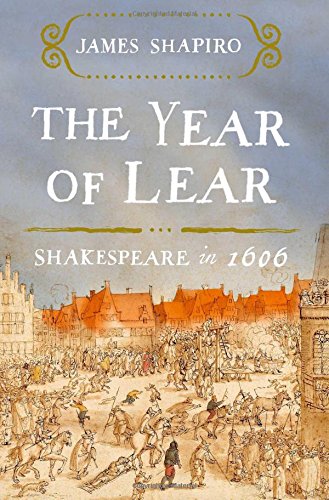
The Year of Lear
Shakespeare in 1606
کتاب های مرتبط
- اطلاعات
- نقد و بررسی
- دیدگاه کاربران
نقد و بررسی

June 1, 2015
Shakespeare expert Shapiro (Contested Will) delivers a fascinating account of the events of 1606 and how they may have influenced three tragedies the Bard is thought to have written that year or soon afterwards. He starts by acknowledging that writers, including Shapiro himself, have traditionally treated Shakespeare as an Elizabethan playwright instead of a Jacobean one, though some of his greatest plays are from the latter era. Shapiro goes on to trace the Shakespearean implications of a year that included the trial (and execution) of Guy Fawkes for the Gunpowder Plot, plague, European royals visiting England, and family drama. It’s an inherently fraught task—“I’m painfully aware that many of the things I’d like to know about him... cannot be recovered”—but Shapiro convincingly demonstrates how closely contemporary events are reflected in the plays. The parties in Antony and Cleopatra that leave Pompey drunk “have no source in Plutarch,” so the reports of such events during the visit of Danish King Christian seem a likelier source. The other tragedies explored here—Macbeth and, of course, the titular King Lear—show similar contemporary influences on both plot and theme. Shapiro is as compelling when documenting historical events as when analyzing Shakespeare’s text, and his sizable bibliographic essay provides ample fodder for readers wanting to dive deeper into his research.

May 15, 2015
As England lost Queen Elizabeth and gained James of Scotland as its king, a popular playwright named William Shakespeare seemed to have lost his touch. Then came 1606, with the barely thwarted Gunpowder Plot, and Shakespeare was up and running again; that year saw the completion of King Lear and the composition of both Macbeth and Antony and Cleopatra. Columbia professor Shapiro is the author of the engaging Contested Will.
Copyright 2015 Library Journal, LLC Used with permission.

Starred review from August 1, 2015
In a difficult year for England, Shapiro recognizes a fruitful time for the country's greatest playwrightWilliam Shakespeare. Indeed, the very difficulties of 1606 incubated the imaginative vigor manifest in the three masterpieces the Bard completed in that yearKing Lear, Antony and Cleopatra, and Macbeth. The tensions of 1606 arose in part from the push by the new monarch, King James, to unite his Scottish homeland with England, a push raising vexing questions about national identity and about how a divided royalty can strain that identity. Shakespeare embeds these questions in the realpolitik of Lear, so signaling the self-transformation that made a premier Elizabethan dramatist into an iconic Jacobean. Readers detect further evidence of this transformation in Antony and Cleopatra, where the pacific Octavius looks remarkably like the irenic James. True, the peace-loving James became stern after he was almost killed in the blast planned by those who hatched the Gunpowder Plot. But a resourceful Jacobean poet could infuse the fiery royal rhetoric that prosecutors turned against the plotters into King Lear's climactic outburst on the heath. Even the epidemic of plague closing theaters for much of 1606 inspired Shakespeare, who memorialized the tragedy in elegiac lines in Macbeth. An impressively fine-grained Shakespearean inquiry.(Reprinted with permission of Booklist, copyright 2015, American Library Association.)

























دیدگاه کاربران